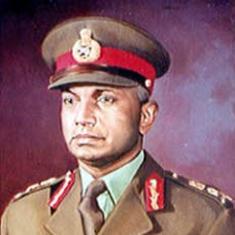Sourindro Mohun Tagore (1840-1914), a prominent musicologist, patron of music of the Pathuriaghata Raj family, and a key figure in Calcutta’s Hindustani music scene in the nineteenth century, sent a collection of traditional and hybrid musical instruments and books written by him to Australia. The collection is now housed at the Monash University in Melbourne, Australia. Around the same time, Tagore also sent similar collections to other parts of the world.
Tagore's many projects are to be seen in the context of endeavours made by others during the same period that sought to classicise the Hindustani tradition, to portray it as an ancient system dating back to the Vedas, and establish it on par with Western music.
Tagore established the Bengal Music School in Calcutta in 1871 and also set up the Bengal Academy of Music in 1881, to encourage the practice of music by awarding titles and insignia to distinguished musicians. He was involved in incorporating music in the regular school curriculum in the city, and specially engaged a tutor to teach vocal music in the Calcutta Normal School. Tagore also wrote a book on vocal music in Hindi on the request of C Browning, the Director of Public Instruction in the erstwhile Central Provinces. This was accepted as a textbook. His books include Kanthakaumudi, Sangita Sara and Yantrakshetradipika.
Recently, sarod player and researcher Adrian McNeil, revisited Tagore’s compositions notated in Western staff notation and included in his book 50 Tunes. The ensemble included Adrian McNeil (sarod), Vinod Prasanna (bansuri), Bobby Singh (tabla), Michael Galeazzi (bass), and Damian Wright (guitar).
The following video clips include some of these compositions. As mentioned in the text accompanying the clips, the interpretations have deviated a little from the original score.
Raag Purbi
The first clip features a composition in raag Purbi, commonly called Poorvi. This raag is normally sung or played at dusk. The composition is set to Teentaal, a cycle of 16 matras or time units.
Raagini Iman
The second piece entitled Raagini Iman in the original score, is the popular late evening raag Yaman. The presentation begins with a seven unit rhythmic framework, but the tabla enters with the eight matra Kaherva.
Raag Jhijhit
The next piece based on raag Jhinjhoti, is entitled Raag Jhijhit in the original score. Starting in Kaherva, the composition moves to the six-matra Dadra taal.
Raagini Bhairabi
The last clip features Bhairavi, entitled Raagini Bhairabi in the original score. Beginning with an aalaap or introductory section, the composition that follows is set to vilambit or slow Teentaal. Another composition, similar to many traditional Bhairavi pieces, is added towards the end in drut or fast Teentaal.










